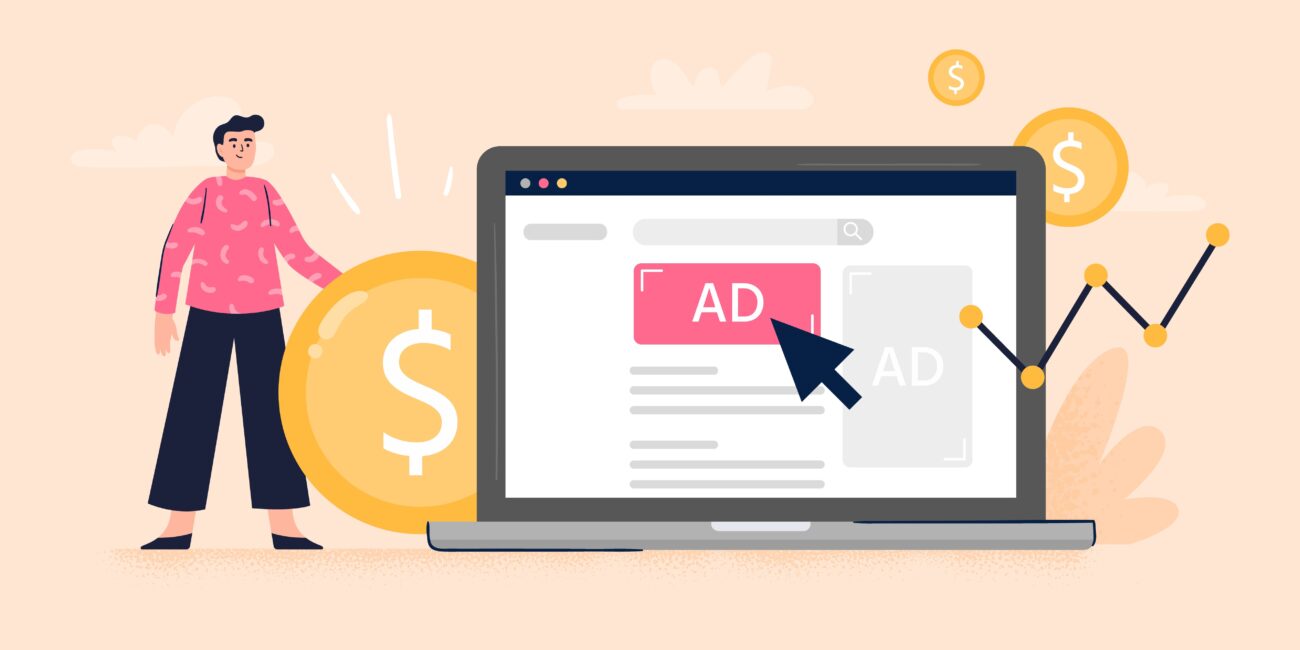Marketers today face a tall order to maximize media placements’ return on investment (ROI) while reducing their overall spend. This is especially true in paid search advertising, also frequently referred to as search engine marketing (SEM), because the digital landscape moves at a record pace. That’s why effective paid search strategies are not a one-and-done deal; it’s imperative to monitor how ads perform against the budget to get the best results.
In 2024, eMarketer projects that ad spending on search in the U.S. will reach over $90 billion — more than any other media channel. Nevertheless, marketers remain in the dark about how much they should spend on paid search, especially when determining when it’s time to boost the budget.
A host of factors impact the effectiveness of your paid search strategy and, as a result, the return on your ad spend. What follows is a comprehensive guide to conquering the complexities of paid search budget management so you get more bang for your buck.

What Factors Should Influence Your Paid Search Budget?
Given the pace of change in the search landscape, setting a paid search budget requires an agile approach. Keeping a close pulse on the following factors (or partnering with an agency that can do so for you) will ensure that your budget is allocated where it will drive the best results.
Campaign Performance
It’s impossible to know if you’re spending the right amount on paid search without a strong understanding of whether your strategy is driving the results you seek. Start with a clear framework for your campaign goals. Do you want to increase brand awareness by generating more website visits? Or do you want to drive new leads?
Once you have set clear campaign goals, identify and monitor the metrics that will most effectively showcase what’s working and what may need to be adjusted. Below are three examples of metrics that offer valuable performance insights:
- Click-Through Rate (CTR). The percentage of people exposed to an ad who click on a link in the content.
- Conversion Rate. The percentage of website visitors who complete a desired action, such as a purchase or sign-up.
- Cost-Per-Lead (also known as Cost-Per-Acquisition). The average cost spent to acquire a new lead.
For example, an automobile manufacturer launching a new car model may want to first drive awareness of the launch. A high CTR indicates that their bidding strategy was working and justifies an increased budget. Increasing your budget based on positive results can help you amplify impact and get more mileage out of your budget.
A strong pulse on these metrics also allows marketers to set benchmarks for “good” performance and experiment with strategies — landing page variations, ad creative, or some other campaign element — to find even more success. You can get crystal clear on exactly what is driving success and double down where it matters most.
Auction Performance
The search landscape is crowded. You’ll likely find that if you are optimizing for a keyword related to your product or brand, others are as well. Successful digital marketers aren’t looking at their campaign results in a vacuum but against the rest of the market. Understanding and monitoring your competitors’ paid search strategy is almost as important as managing your own. Their tactics offer valuable insights into where you need to be and can also indicate where your brand has white space to fill and an outsized presence.
Google and Bing Ads offer a robust suite of measurement tools to understand paid search performance in the context of the broader search landscape. Google’s auction insights, for example, allow you to compare your performance with other advertisers bidding on the same keywords as your brand. It offers six key metrics for keywords or ad groups:
- Impression share: The percentage of impressions your ads receive compared to the total number of impressions your ads could get.
- Overlap rate: The percentage of times a competitor’s ad receives an impression in the same auction as your ad.
- Outranking share: The percentage of times your ad ranked higher in the auction than another participant’s.
- Position above rate: The percentage of times other advertisers’ ads were shown in a higher position than yours when shown at the same time.
- Top of page rate: The percentage of times your ad was shown at the top of the page, above the unpaid search results.
- Absolute top-of-the-page rate: The percentage of times your ad was shown as the first result on a page.
Our digital experts have found it valuable to monitor impression share closely to gauge whether your budget is appropriately allocated. For example, a new electric vehicle company that is still solidifying its place in the market can get a lot of value out of auction insights. If their impression share is below 70% and they’re happy with the cost-per-lead, they can spend more money. This would allow the brand to increase visibility over other electric vehicle players participating in the same auction and may have more existing brand awareness.
Long-Term Customer Value
Often, when marketers think about paid search campaigns, they want to see immediate results. It’s natural, of course, but there is also value in gauging the long-term payoff of a new lead or conversion. This is measured through customer lifetime value (CLV). CLV is the total revenue a customer generates for a brand throughout their relationship.
If your customers make repeat purchases or there’s an opportunity to upsell products, marketers can justify increasing their paid search budget to see greater returns over time. Subscription models in retail are a great example of how this comes to life. While some customers may simply make a one-time purchase, others may be interested in a long-term subscription. While both are valuable, marketers can guarantee that they will see a significantly higher payoff with a subscriber than a customer who only signs on for a one-time purchase.
Compare your customer lifetime value to your cost-per-lead. If it’s significantly higher, then there is room to increase your budget to attract more high-value customers.

Trends and Demand Fluctuations
Industry trends and consumer behaviors also play an important role in shaping paid search spend. They dictate the volume of search queries for terms related to brands and offer opportunities to capitalize on heightened demand. These include:
- Seasonal moments. Holidays or seasonal changes often drive up demand for specific products or services.
- Market trends. Specific industry events, such as conferences or product launches, can create temporary spikes in search interest.
- News. Media coverage of new and noteworthy topics can create a buzz around specific terms and drive search behaviors.
Analyzing historical data and leveraging tools like Google Trends can help identify these peaks and plan your budget accordingly. A travel brand, for example, may see a lot of value in increasing paid search spend during the winter months, when consumers are often dreaming about vacation and beginning their initial planning. Of course, it follows that other travel brands will also be increasing spend during peak periods, so it’s important to measure the trade-off.
You don’t want to just hop on the bandwagon when a shift occurs. It’s important to identify the keywords that offer good traffic but are also relatively low competition from other advertisers to see an outsized impact.
Market Expansion
Launching a new product or expanding your services is also a great time to increase your paid media spend. It’s hard to carve out a space for yourself in a brand-new category through organic traffic alone, especially when other brands have been established in the space for far longer and already hold significant market share.
Of course, your strategy should depend on the size of your budget. Finding the best path forward involves:
- Identifying the most valuable campaign metric. If you’re launching a new car, for example, it would be wise to optimize for the cost-per-lead. If you’re launching a series of items, return-on-ad-spend may provide more valuable success insights.
- Starting with high-intent keywords. This is particularly important if you’re starting with a limited budget. High-intent keywords will allow you to reach motivated audiences and achieve affordability.
- Including the long-tail keywords. If the search around your expansion is too competitive, consider optimizing for longer-tail keywords with less competition.
Consider a software company expanding from project management to customer relationship management (CRM). Given the vast selection of existing CRM providers, the company focused on cost-per-lead for software demos and return-on-ad-spend for early subscriptions to gain traction and optimize their bidding strategy accordingly.
Trust J&L To Maximize the ROI of Your Paid Search Budget
While Google and Bing Ads offer valuable tools to measure performance against media spend, automation is best paired with human expertise. Effectively managing a paid search campaign and budget requires a heavy hand. The digital experts at J&L Marketing are here to help get the most out of your budget so you can spend your time elsewhere.
We have a proven track record in supporting brands across industries. Our bread and butter is helping clients out-smart competitors rather than out-spend them. In addition to paid search, we offer support for display ads, demand generation, direct mail, and more. Reach out today to learn how we can help you boost your results.



